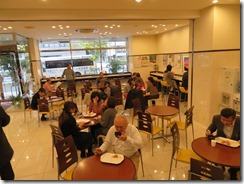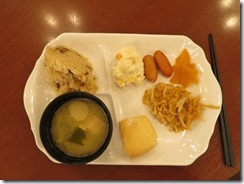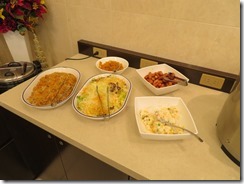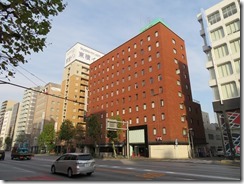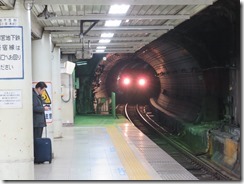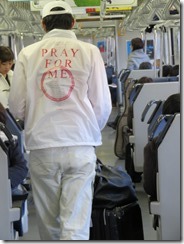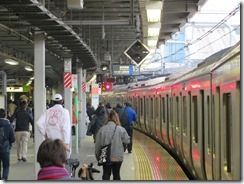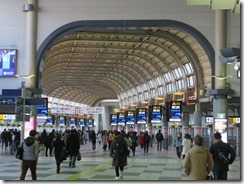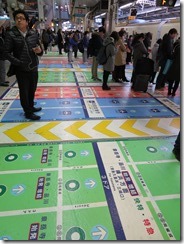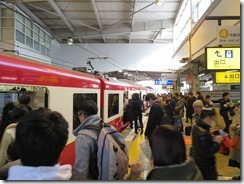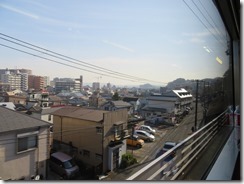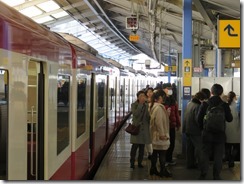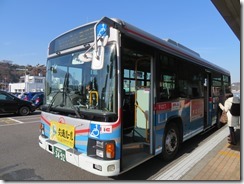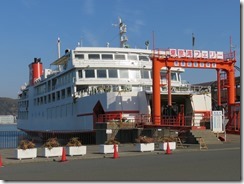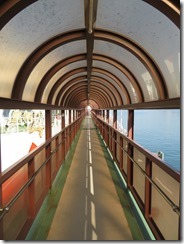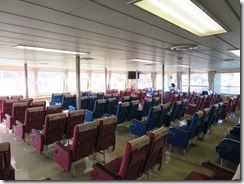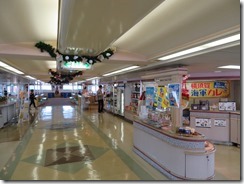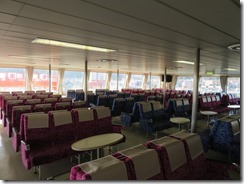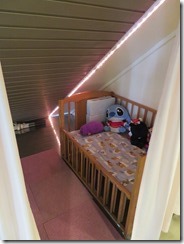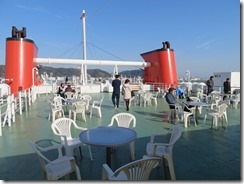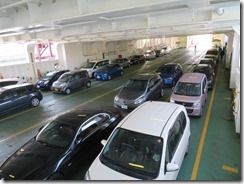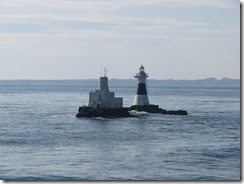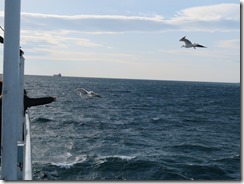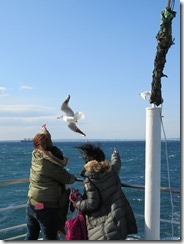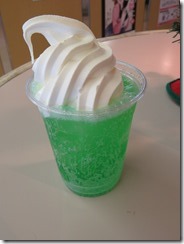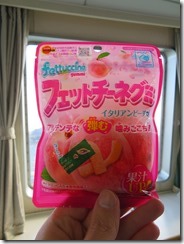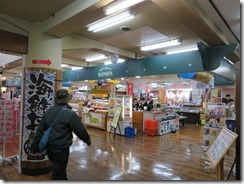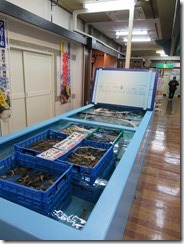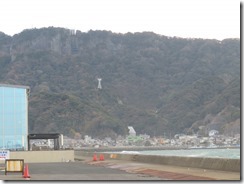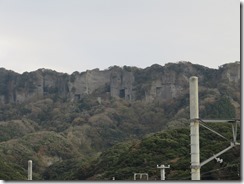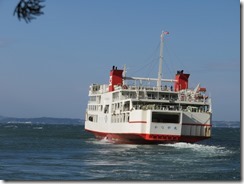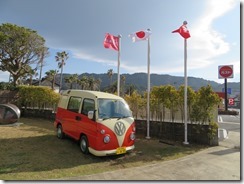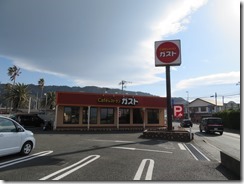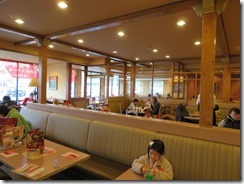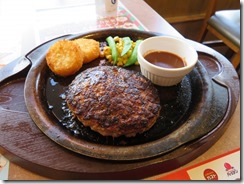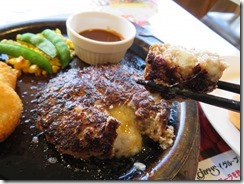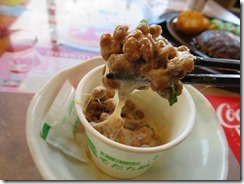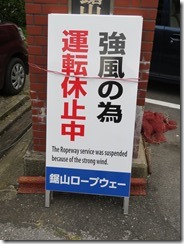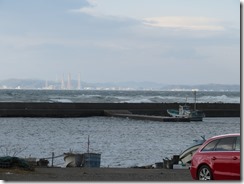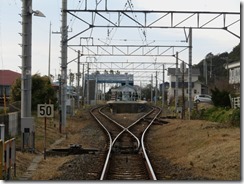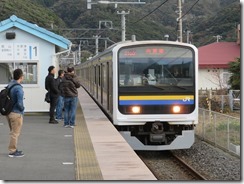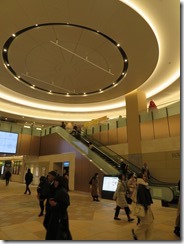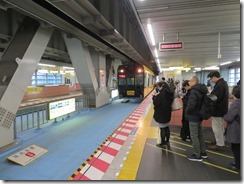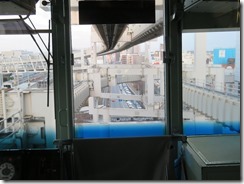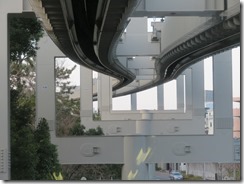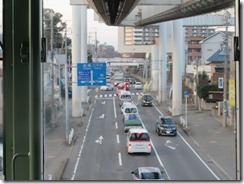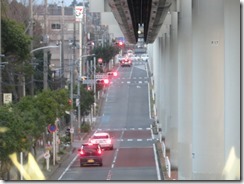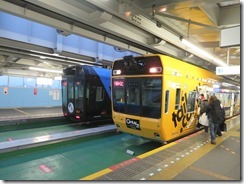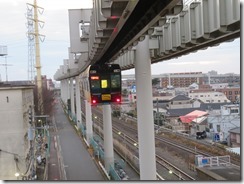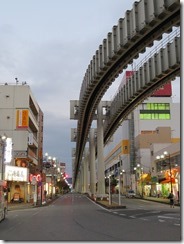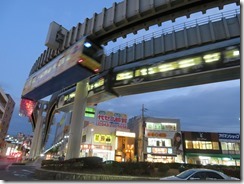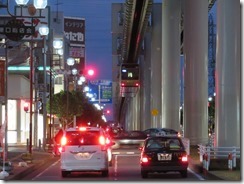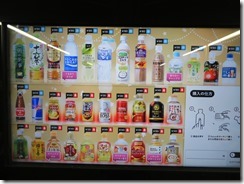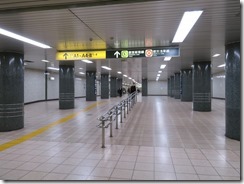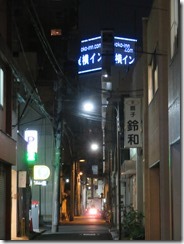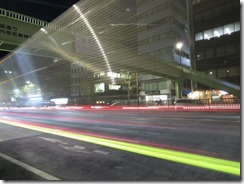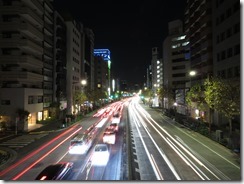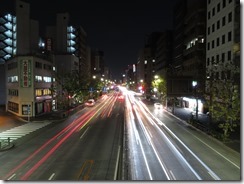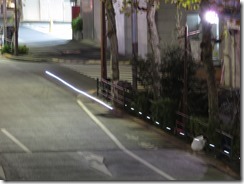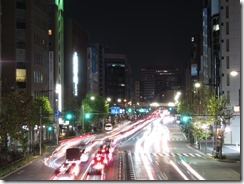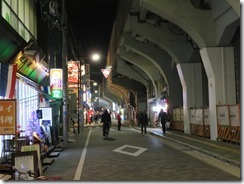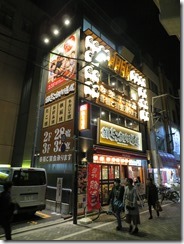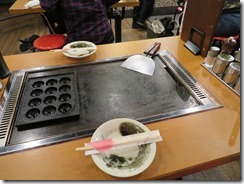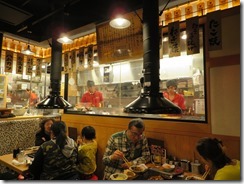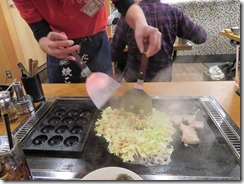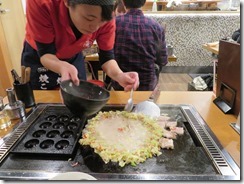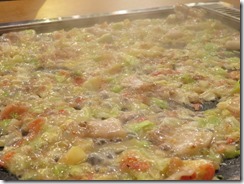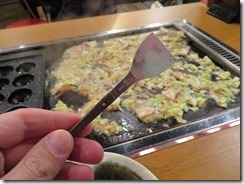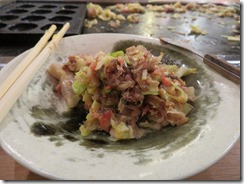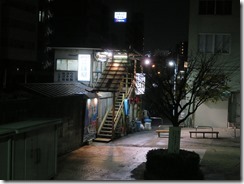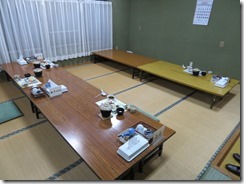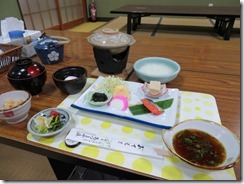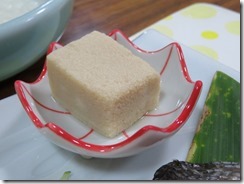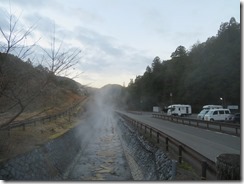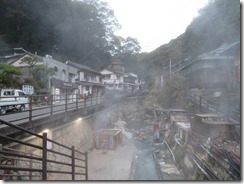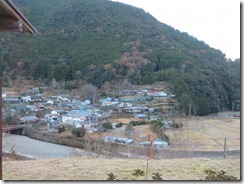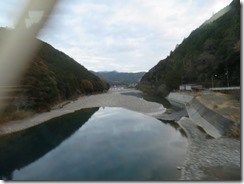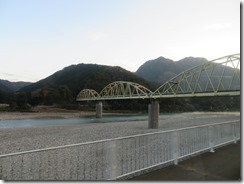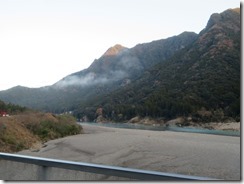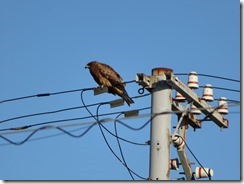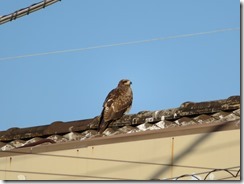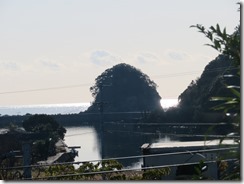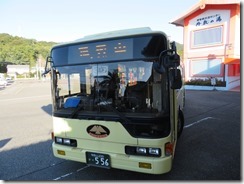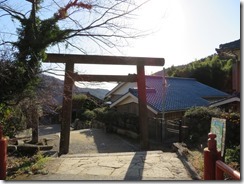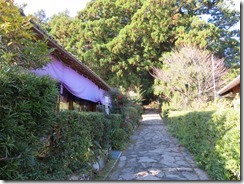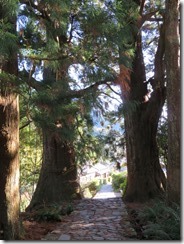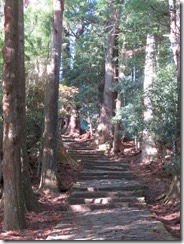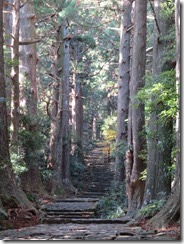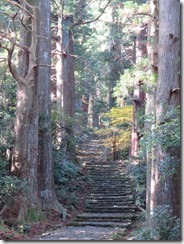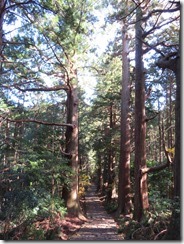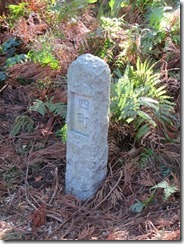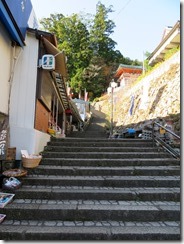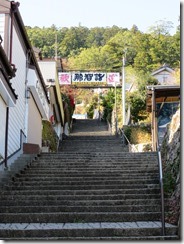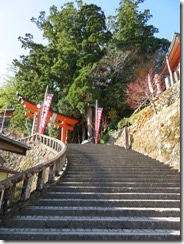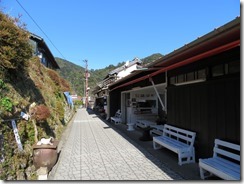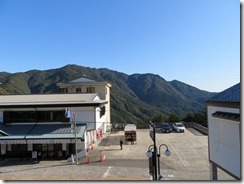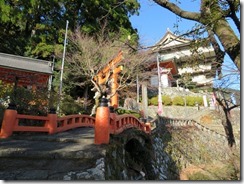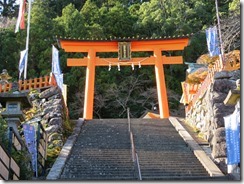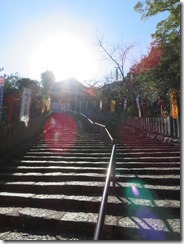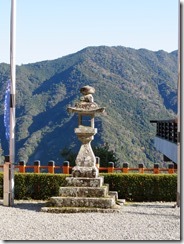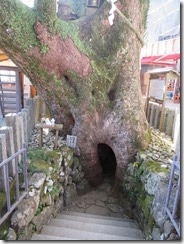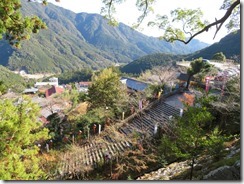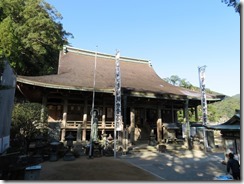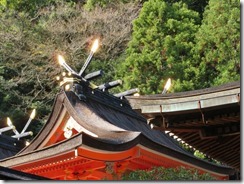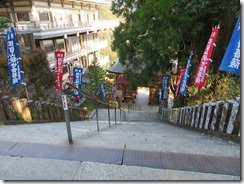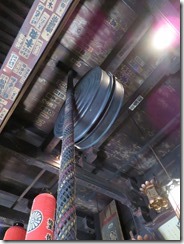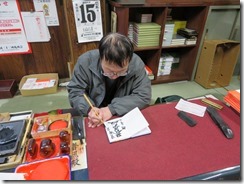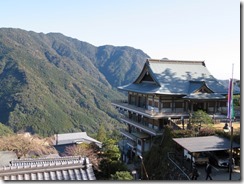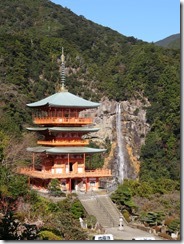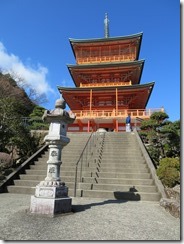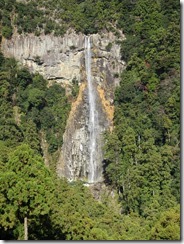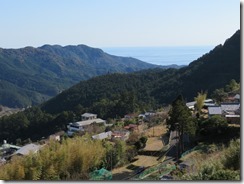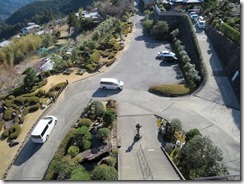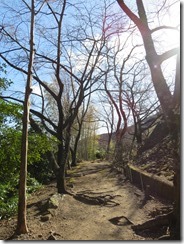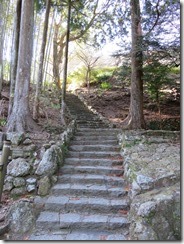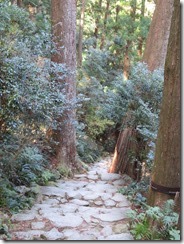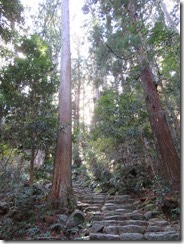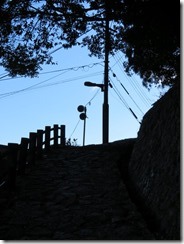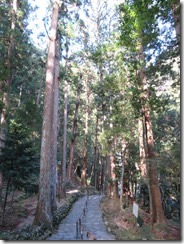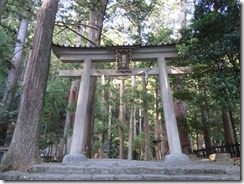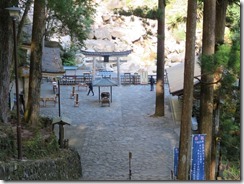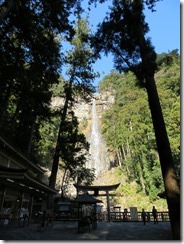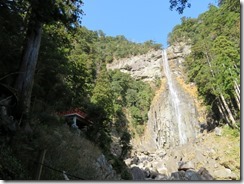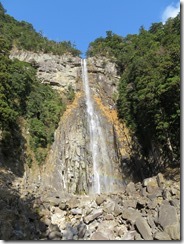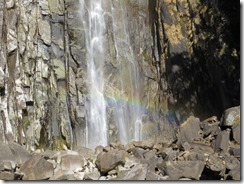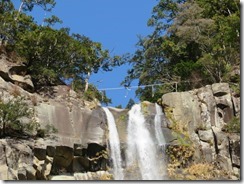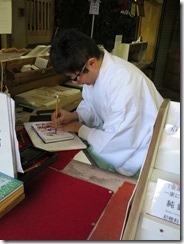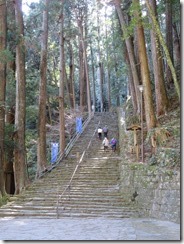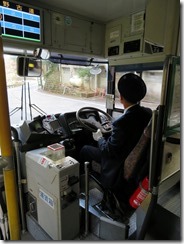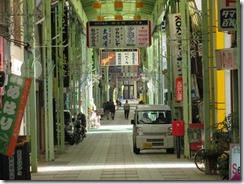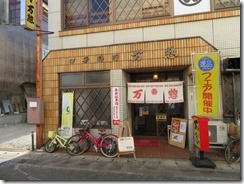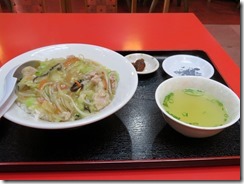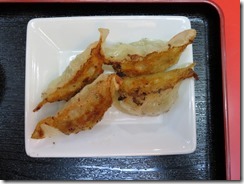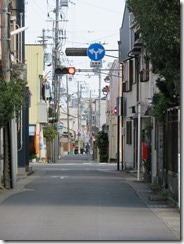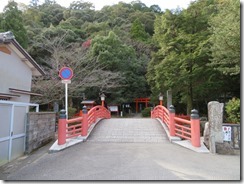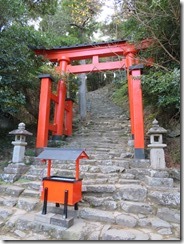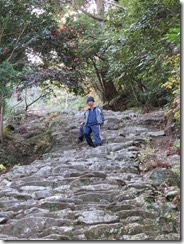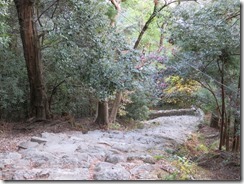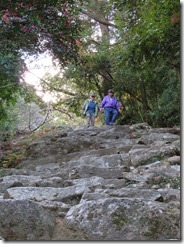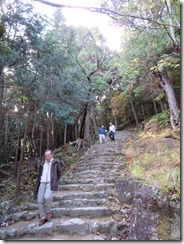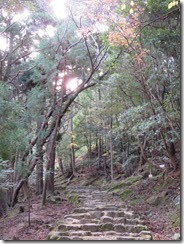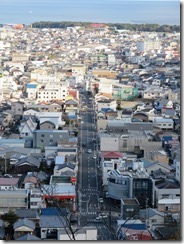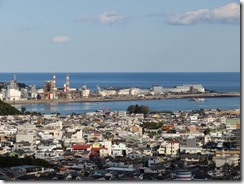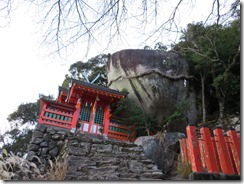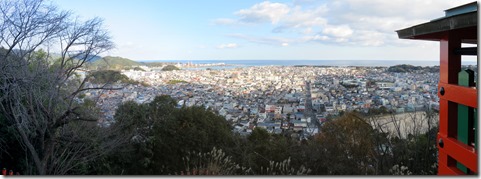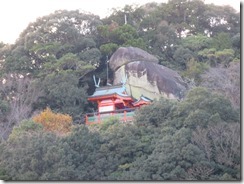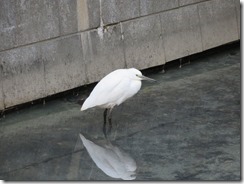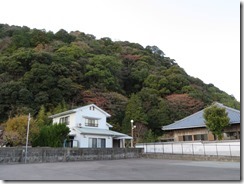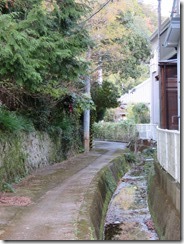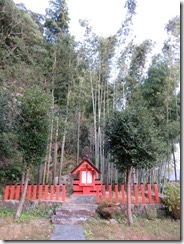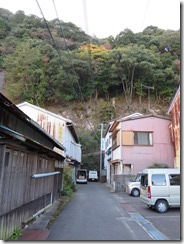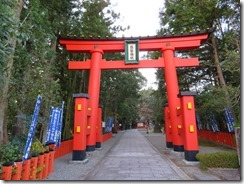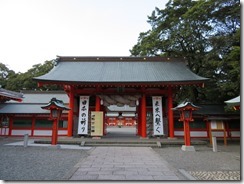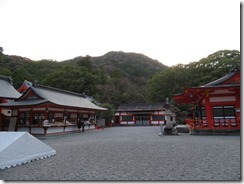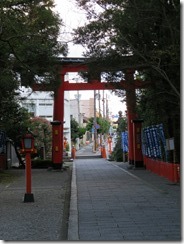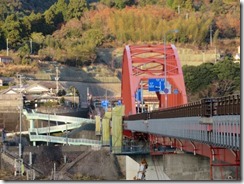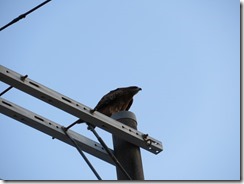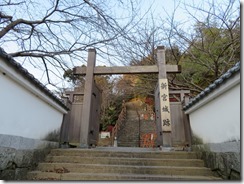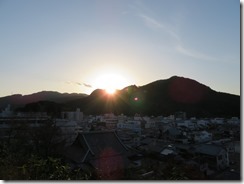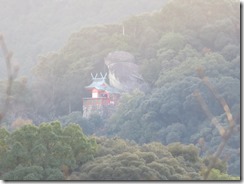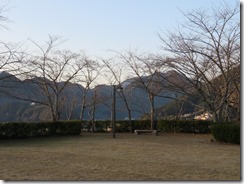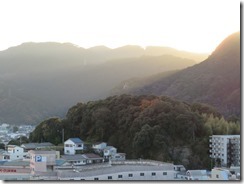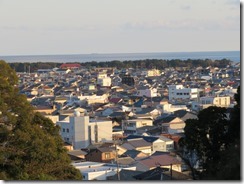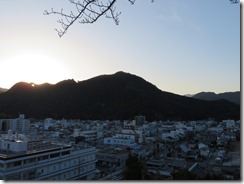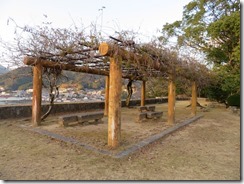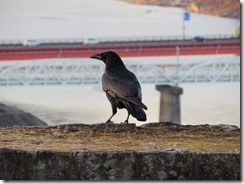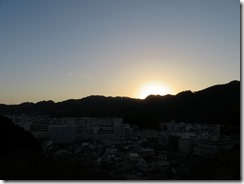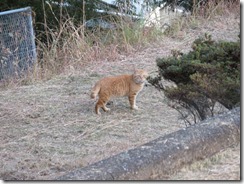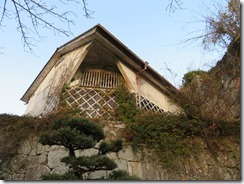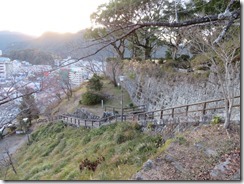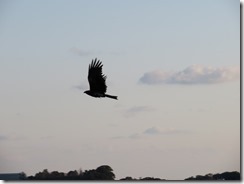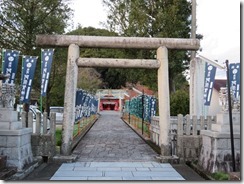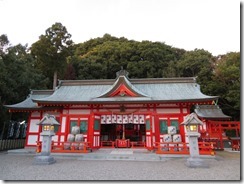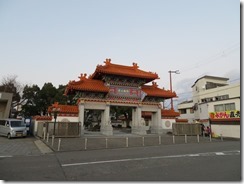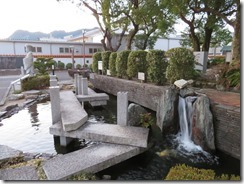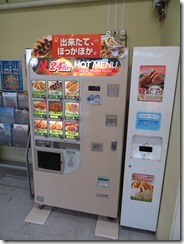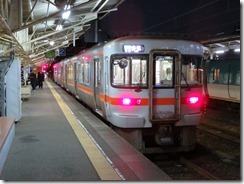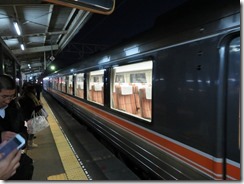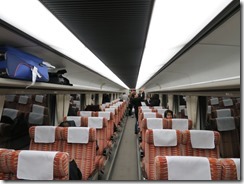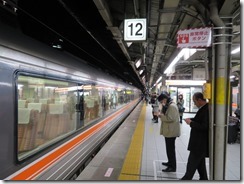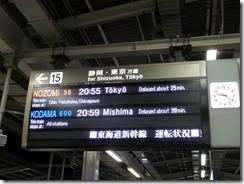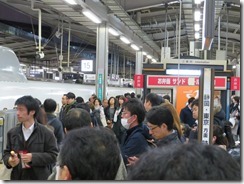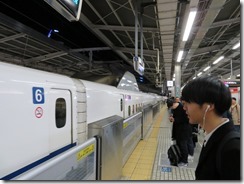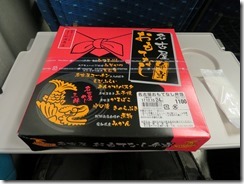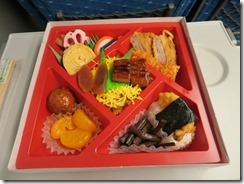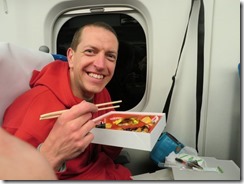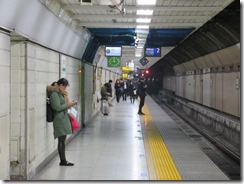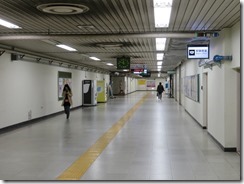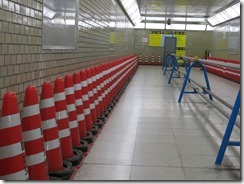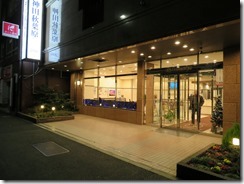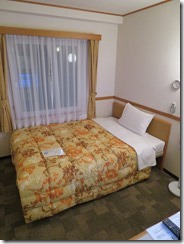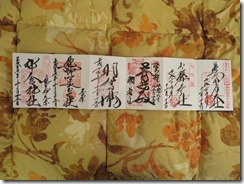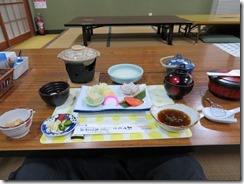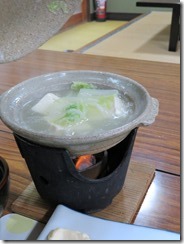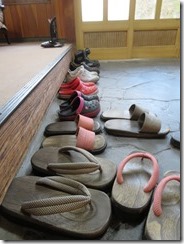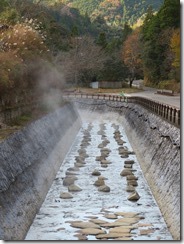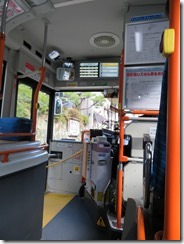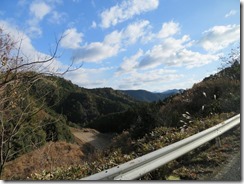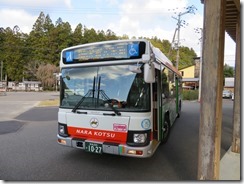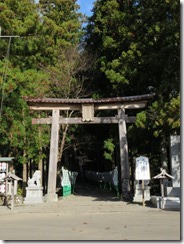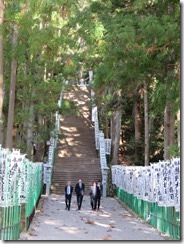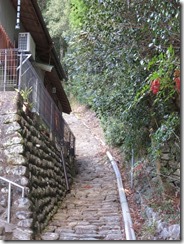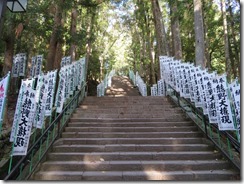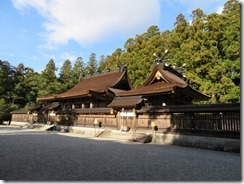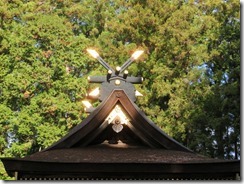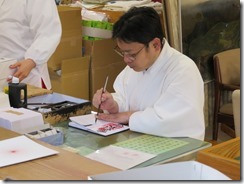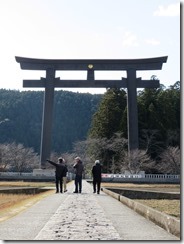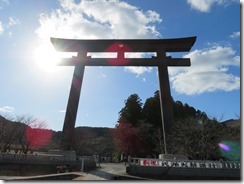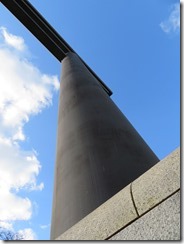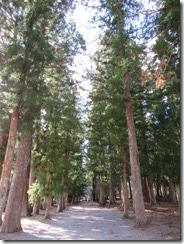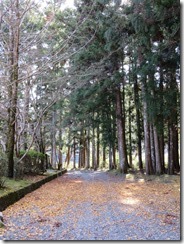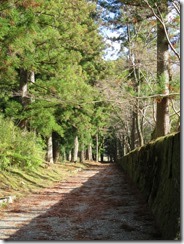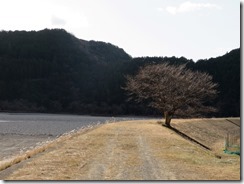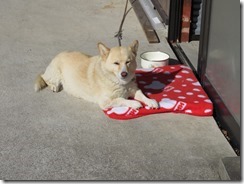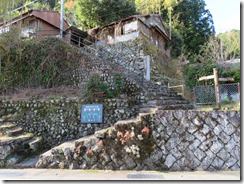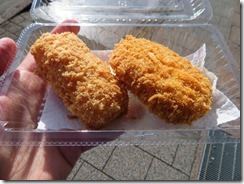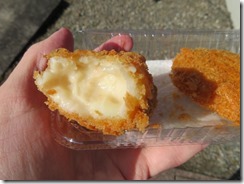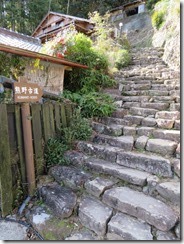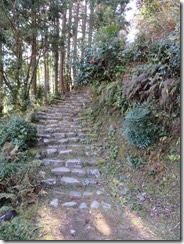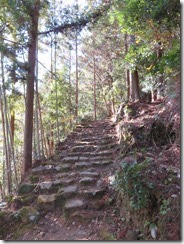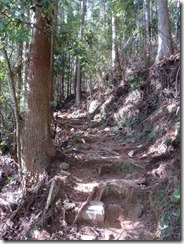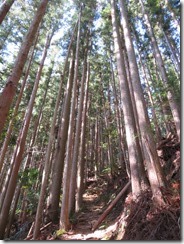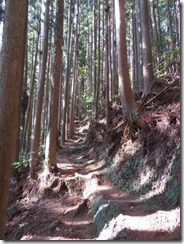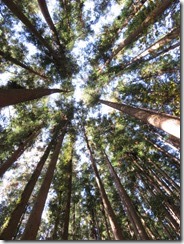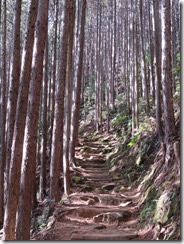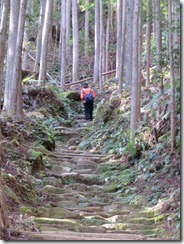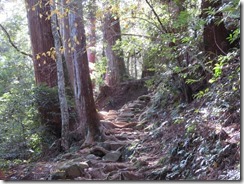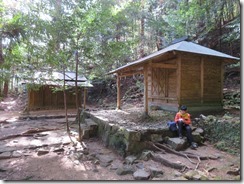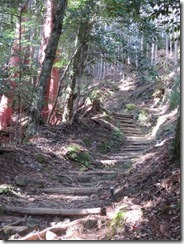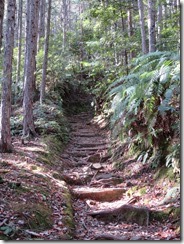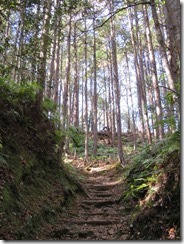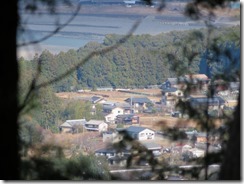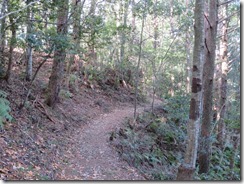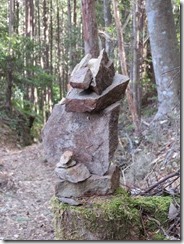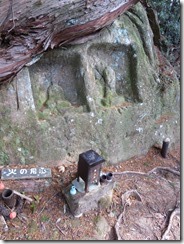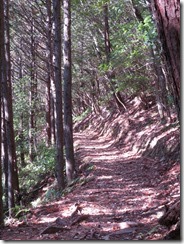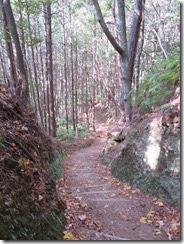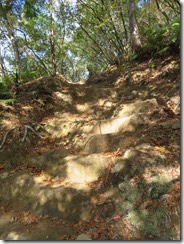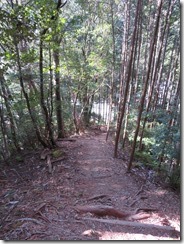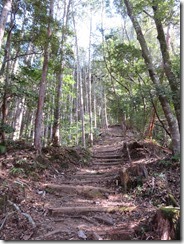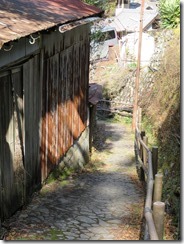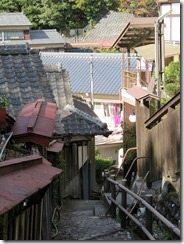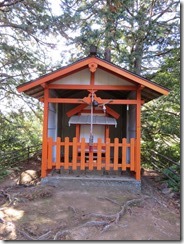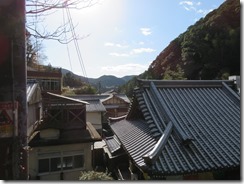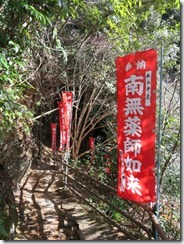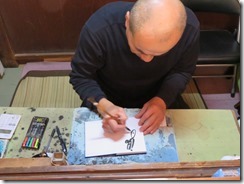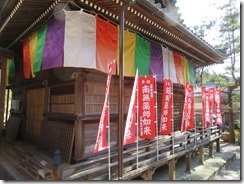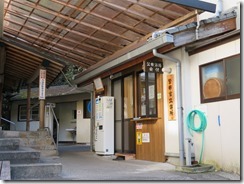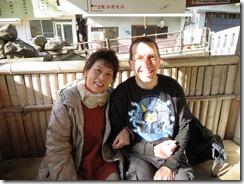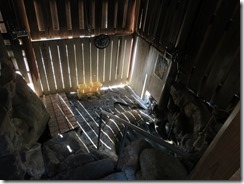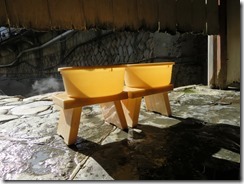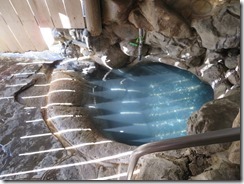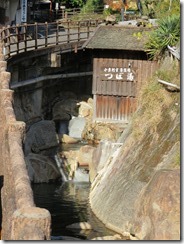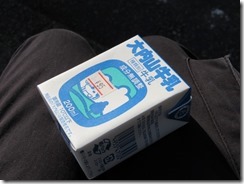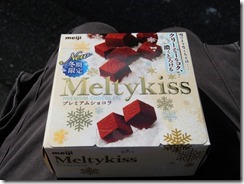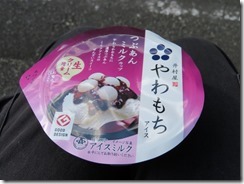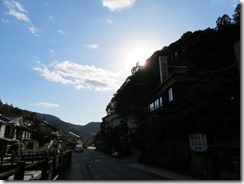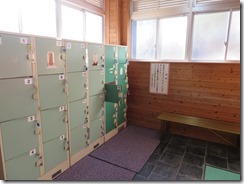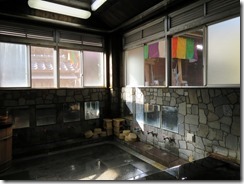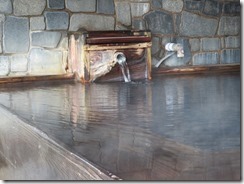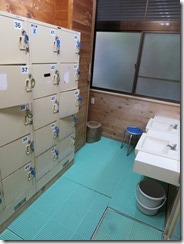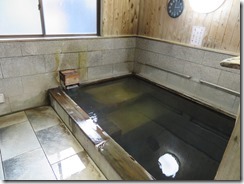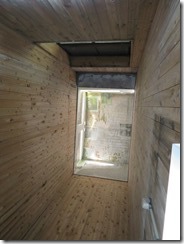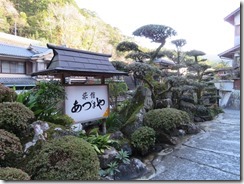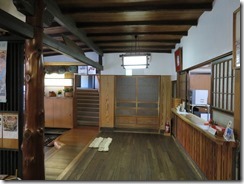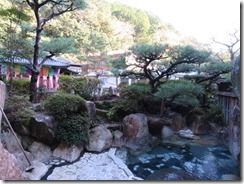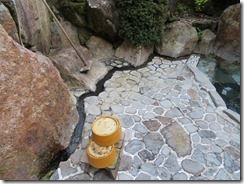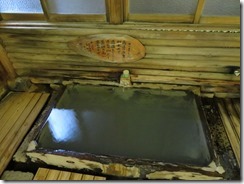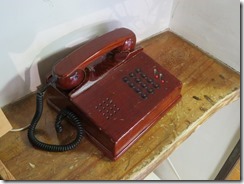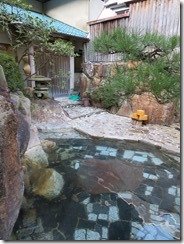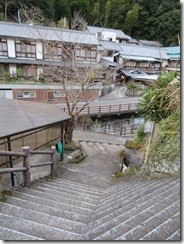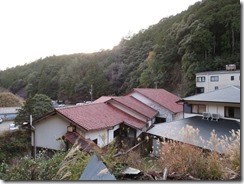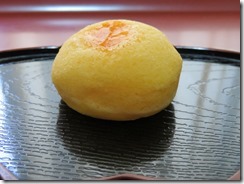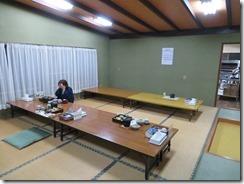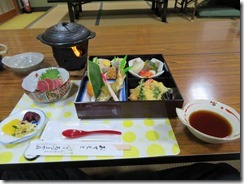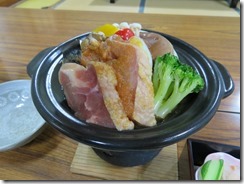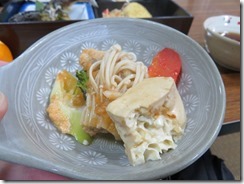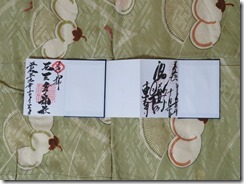Japanese has three different character sets – hiragana, katakana, and kanji… and also romaji, which is just the Latin alphabet (i.e. Roma-ji). Katakana is primarily used for transcribing foreign loanwords, and writing onomatopoeia and scientific terminology, while hiragana and kanji make up the bulk of Japanese text – rough rule of thumb is that kanji forms nouns, verbs and adjectives while hiragana forms all the grammar bits. Hiragana and katakana are both syllabaries, which means they represent a specific sound, but have no inherent meaning, while kanji is a logography, which means each character represents a concept, but can have multiple readings (thanks to how they were introduced to Japan from China).
Place names (and indeed, most proper nouns) in Japanese are almost always written in kanji, which means they have inherent meaning. Sometimes this meaning is obvious – for example, the town of Yokkaichi in Mie Prefecture has a name which means “fourth day (of the month) market”. Sometimes the meaning changes or is lost over time – for example, the kanji used for the “na” in Nara these days refers only to Nara, while the kanji used for the “saka” in “Osaka” was changed in the Meiji restoration because the original kanji looked like a word meaning “samurai rebellion” if you squinted (“Osaka” means “big hill” with either kanji, though).
The point of this little lesson is that it explains the naming scheme for my posts in this section blog – each post title is an out-of-context translation of a placename or train name that bore some significance to what I did that day. So there you have it. Whether Japanese people look at a placename and recognise the meaning inherently, or whether it’s similar to us in English where we see places named “Oxford” or “Cambridge” but only see the meaning if we think about it, I’ve not yet been able to ascertain.
Today was my last day in Japan. Much sad. After breakfast, I packed once more and checked out, leaving my luggage in the care of the hotel. I also donated my el cheapo umbrella – which I used once, the day I bought it, for exactly five minutes – to the desk staff (it’s too long to take home, and I don’t need it here anyway). Before leaving, I headed up to the top floor to see what I could see, and was rewarded with a pretty nice view of the Tokyo Skytree.
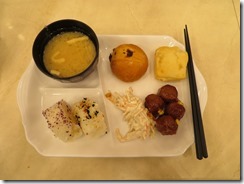
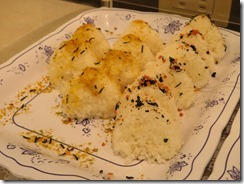
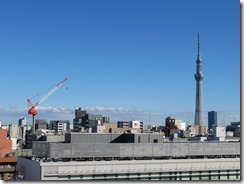
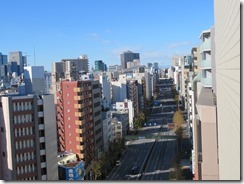
The plan for today was a lovely stroll along the banks of the Kanda River. The river runs from its source in Mitaka (pretty near the Ghibli Museum, actually) until it reaches the Sumida River, one of the more major rivers running through Tokyo. The JR Chuo Line runs along the river from Iidabashi Station to the old defunct Manseibashi Station before turning southward for Tokyo, and it makes for some pretty nice pictures. The Kanda runs past my hotel just a couple of blocks to the north, and the Sumida just a couple of slightly larger blocks to the east, so I decided to start at the mouth of the river and walk as far as Iidabashi.
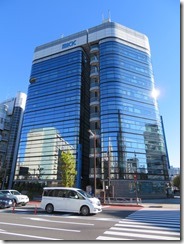
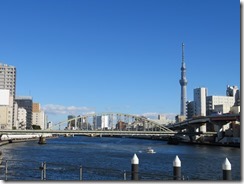
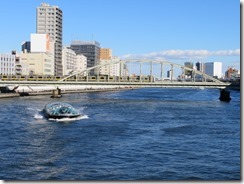
Side note, one trick with looking for subway stations in Japan is that the entrances are often as subtle as this, or even more so: a small sign at the top of a set of stairs apparently leading into a building’s basement.
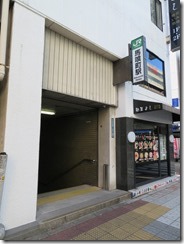
This plan got derailed fairly quickly in another map-vs-real-world disjunct – turns out there’s no road or footpath or anything running along the bank of the river. The roads I’d looked at on Google maps actually had a row of tall buildings between them and the river (you can see them on Google if you zoom in far enough). So I basically reverted to plan “walk down whichever street looks nice”. However, frequent bridges crossing the river did give me opportunities to get out over the water and take some nice photos.
(I did vaguely consider at this point getting my Tokyo Skytree tickets and seeing if I could talk my way into Hanayashiki, but (a) I’d have to go back to the hotel and rummage through my suitcase for them, and (b) I wasn’t entirely sure I felt like sharing Hanayashiki with a weekend crowd.)
The first block does have a path along the river, mind, and it’s lined with little shacks that serve as home bases for Sumida River dinner cruise ships – basically they’re broad flat boats with one large tatami-floored cabin inside, where you sit and eat at a table while they motor the boat around. I would have liked to try this, but I wasn’t sure I wanted to try it alone.
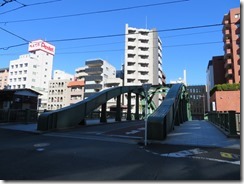
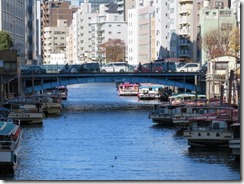
Stopped at a small corner shop for a freshly-made taiyaki – it’s a fish-shaped waffle-like pastry thing filled with red bean paste. Had one last trip, and it wasn’t too bad, but I wanted to try it fresh-fresh. Pretty good.
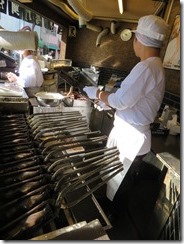
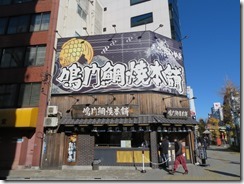
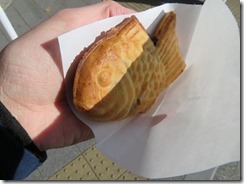
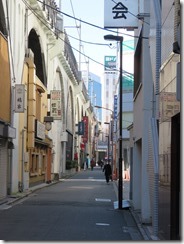
Another side note here, this is what bin night timetables can look like in Japan – and this is one of the simpler ones! (“Flammable waste” is a slight mistranslation, though. Should be “burnable waste” – which is to say, it’s rubbish that can be burnt, like paper or cloth, rather than rubbish that catches fire on its own. No paper recycling here.)
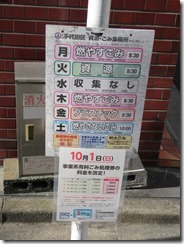
After that, I just wandered at random until I hit Akihabara, at which point everything went haywire. I’d largely seen Akihabara itself on hour last trip, but there were a bunch of things on the periphery that were on my list of things I’d like to do, but I did them all in the wrong order, leaving me doubling back on myself for hours. Image on the left here is a bookshop, by the way – the entire building.
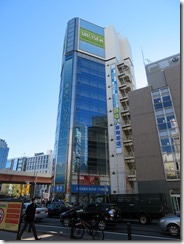
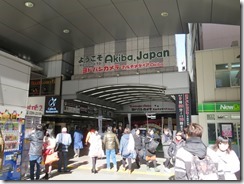
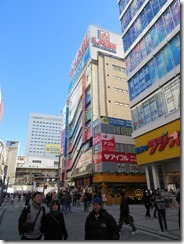
Popped by KFC to check out Colonel Sanders in his Santa suit. One of the traditions here that I just love for its absolute absurdity is that you’ve gotta have KFC for your Christmas night dinner. Japan not being a Christian country, they just didn’t originally celebrate it here, until various retailers decided to introduce it as a way to sell more stuff – specifically, they imported the capitalism bits, and left the Christian bits behind, so it’s seen more as a day to hang out with friends (or boy/girlfriends) and give presents. New Years’ Day is this biggest event at this time of year in Japan; it’s a time to go back home and spend time with family. Kinda the opposite way to how we do things in Australia – you spend Christmas with family and New Years’ with friends.
Which brings us to KFC. People in Japan know that an American Christmas dinner involves turkey. For the most part, however, you just can’t get turkey meat here – there’s not enough land available to farm them on. So what’s the next best thing? Chicken. And where to do you get chicken? KFC, of course. It’s a tradition that KFC were only too happy to encourage, and now it’s so popular that you pretty much have to book your take-away bucket weeks or months in advance in order to be assured of getting it.
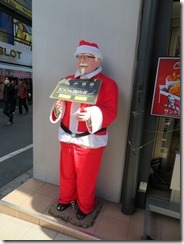
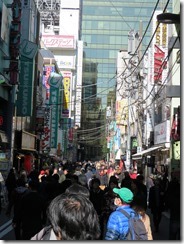
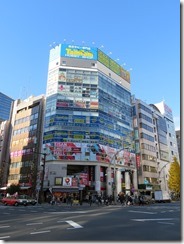
Anyway, first I went to see, Kanda Myojin. Officially named Kanda-jinja, it’s a 1200-year-old shrine practically right next to the hyper-modern Akihabara Electric Town, making it a kind of mecca for the technophiles who frequent the area. And ever since an anime named Love Live featured a character who worked as a miko here, it’s become a mecca for the otaku crowd as well. As an added bonus, it enshrines Daikokuten and Ebisu, two of the Seven Lucky Gods, the latter of which I’ve so far not managed to visit. That I’m aware of, anyway.
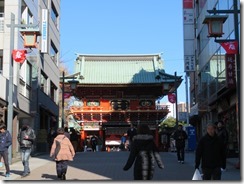
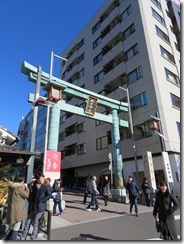
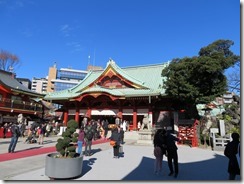
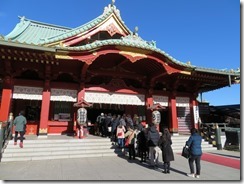
Just as with Matsunoo Taisha in Kyoto last Sunday, Kanda Myojin was playing host to a wedding in the inner court as well. They were being arranged on the steps for a group photo while people were standing in line to pray at the shrine literally right behind them. Not entirely sure what people think of having the backs of people in a queue in their wedding photos – maybe the photographer airbrushes them out or something. There didn’t seem to be anyone there trying to shoo the crowd away.
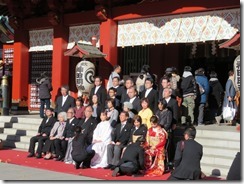

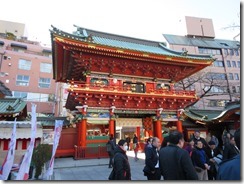
Anyway, ran around there taking some photos, before heading out down the side staircase (which also features in Love Live, as a place where characters regularly do exercise) and retracing my steps back to Akihabara. Honestly, I was quite surprised by how high Kanda Myojin is above street level at the back, because it’s at street level at the front.
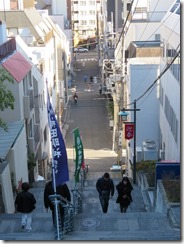
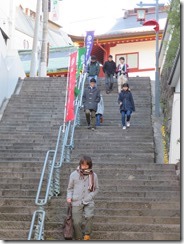
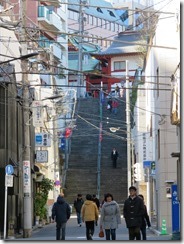
Next stop, 2k540 Aki-Oka Artisan. It’s a handicrafts shopping street built under the railway lines – that mouthful of a name comes from the fact that it’s 2.54km from Toyko Station, between Akihabara and Okachimachi stations. It was quite a nice little place, and I window shopped for a bit, before moving on.
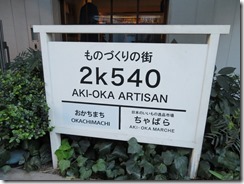
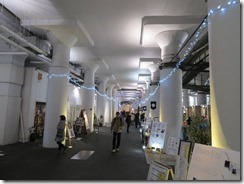
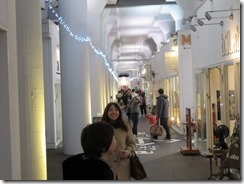
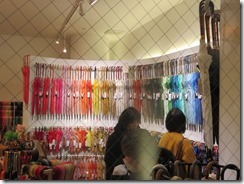
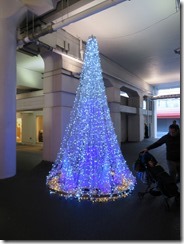
Next stop, mAAch ecute, over on the south side of the Kanda River. Yes, with that exact case. I’ve no idea what the name means (though I’m fairly sure that “ecute” is a chain of shopping centres). It’s again a kind of shopping street built under the tracks, though in this case it occupies the concourse of the old Manseibashi Station, which closed in 1943 (because it was so close to other stations on the line). The station building is a lovely old red-brick thing, and inside, you walk from shop to shop by ducking through archways. As in, there’s no common hallway that’s outside of the shops; you literally walk from inside one shop to inside the next.
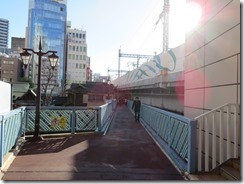
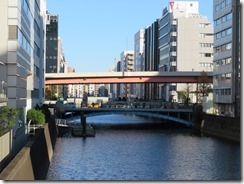
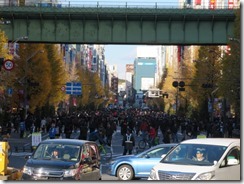
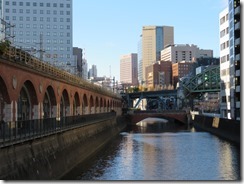
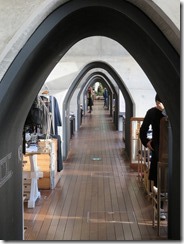
Upstairs, on the old platforms, is a small glassed-in garden and a cafe, and since it is the old platforms, Chuo Line trains rush past on both sides. I would have liked to eat at the cafe, but it was a little more expensive than I’d anticipated (to give you an idea, the name of the place was “Platinum Fish”). They did have a pancake set which I was sorely tempted to try, though – Japanese pancakes are about an inch thick.
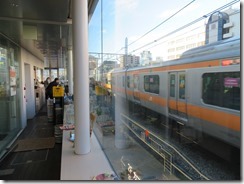
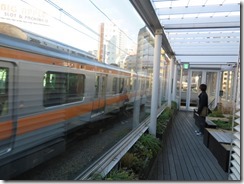
Instead, I headed a few blocks away to find Takemura, a traditional Japanese sweets shop, in a traditional Japanese building. Mostly I’d heard of this place because it serves as the home of the main character in Love Live, but once I’d seen it, I knew I had to visit it anyway. Sadly, it’s closed today, but it was still nice to get a look at the building. I did not, however, eat any traditional Japanese sweets at any point in my trip. Next time, I suppose.
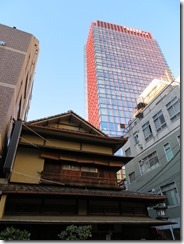
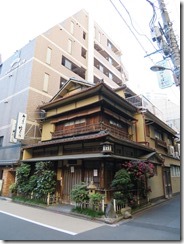
By this point, though, it was getting on towards 3pm, and I was starting to get pretty peckish, so I thought I’d head for Ochanomizu Station, the next station upriver, and see if I could find somewhere for lunch. I considered having sushi, because I hadn’t had any so far, but none of the places I was interested in trying were nearby. Plus, the temperature was starting to drop, and I’d left my puffy jacket in my suitcase (not thinking I’d need it), so I wanted to eat something hot.
On the way, I passed Hijiribashi (bashi = bridge), and found a film crew filming a scene for something. I tried to take a photo, but a crew member jumped in the way saying “no, no”. My attempts at taking some on the sly anyway were failures. I did, however, get some nice photos over the river – Ochanomizu Station is one of the more pictureque places along the river. Just downstream of the station, the Chuo Line and Sobu (Local) Line separate to go there separate ways, while at the same time, the Metro Marunouchi Line makes a brief appearance aboveground to cross the river on a bridge (or rather, the ground drops to below the level of the Marunounchi Line). I took a few photos of trains, then considered waiting for the film crew to start the next take, but again, cold and hungry, so I moved on.
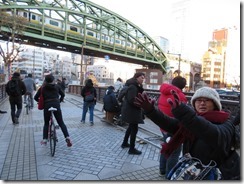
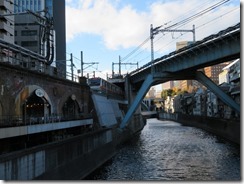
At the next bridge, I found a place for some really nice photos of trains pottering about, so I took a few there before moving on.
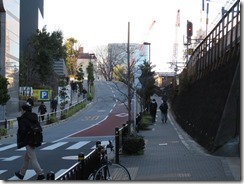
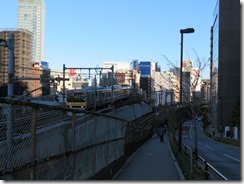
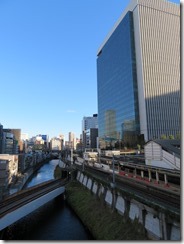
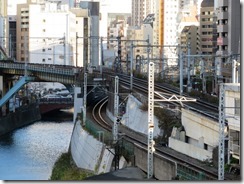
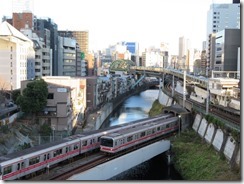
Soon found a place for lunch: a tsukemen restaurant. Tsukemen is basically like ramen, except instead of getting a bowl of noodles in soup, the soup and noodles come in separate bowls, and you dip the noodles in the soup before eating them. The soup in tsukemen is a bit thicker, so it sticks to the noodles better. Most tasty. Most warm. There were also thermoses (thermae?) full of dashi stock on the counter – the idea being once you finish the noodles, you dilute the soup with a bit of dashi and drink the soup. However, a glass full of it also made for a convenient hand-warmer (though I’m sure the staff thought little of me doing that). Poured my glass of hand-warmer into my soup afterwards, and it turned out it was a little more than they recommended using (the recommendation is add dashi equivalent to about a third of the remaining soup, but my glass held about twice as much dashi as soup… aha, whoops).
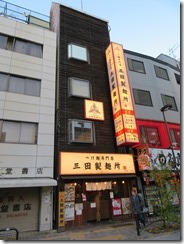
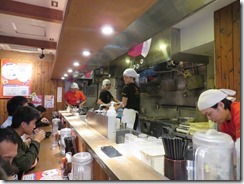
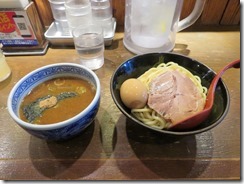
Lunch done, I walked on to Suidobashi Station, but I was just getting colder and colder, and it was approaching sunset too, so I decided to invoke the next stage of my plans. Japan has a lot of winter illuminations around the place, and one that had piqued my interest was Minna no Illumination along the Meguro River between Gotanda and Osaki stations on the Yamanote Line. The trees along the river are covered in pink lights to resemble cherry blossoms. And it turns out that unlike the Kanda River, the Meguro River does have a walking path along the riverbank.
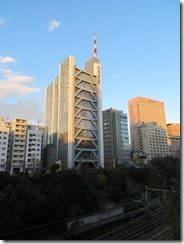
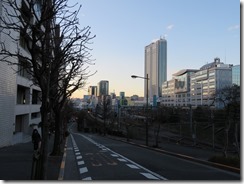
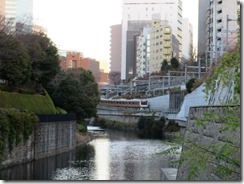
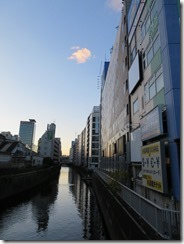
I’d been meaning to go and see this if I ever had a free night, but I never did manage to find the time – now I did. According to my calculations, I needed to leave my hotel by 7pm (after retrieving my luggage) to get to Haneda Airport (where I’d be flying out of) on time, so I told them when I left my luggage that I’d be back at 6. The Meguro illuminations start at 5, and the Toei Asakusa Line (which, as previously mentioned, passes my hotel) also stopped at Gotanda Station, so I could get back to the hotel in about fifteen minutes, giving me plenty of time to enjoy the lights as I strolled from Osaki to Gotanda.
So I hopped on the Chuo Line train at Suidobashi, changed to the Yamanote Line at Yotsuya, arriving at Osaki just a few minutes before the illumination started. And when it started, it was like spring came all at once.
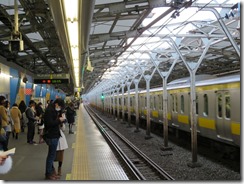
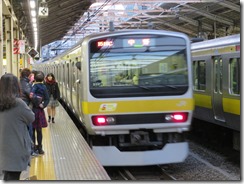
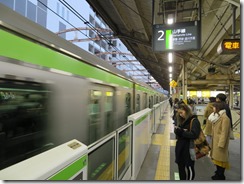
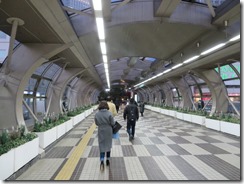
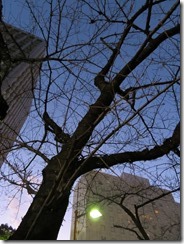
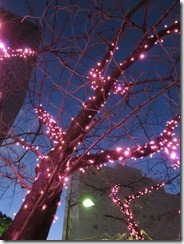
Spent a bit of time playing with camera settings to see if I could take some nice shots of the lights, eventually arriving at Gotanda Station.
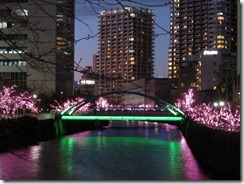
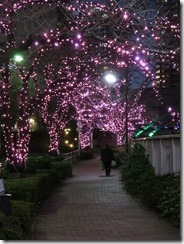
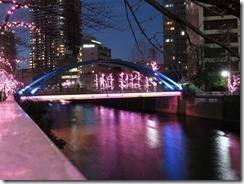
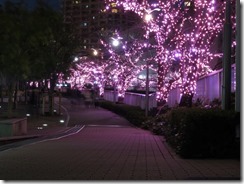
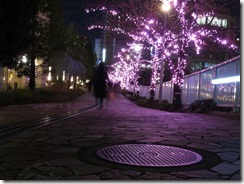
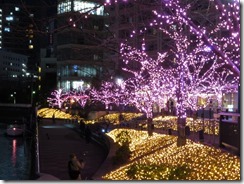
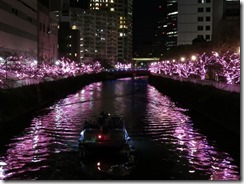
Hopped on the Asakusa Line train. Turns out this particular line has the distinction of hosting through-traffic from the greatest number of other companies for any train line in Tokyo, with six in total. As well as Toei’s own trains, the line also receives visitors from the Keikyu Railway(which I mentioned when I rode them yesterday), the Keisei Railway, the Shibayama Railway, the Hokusou Railway, and the Chiba New Town Railway. It’s also the only subway line in Tokyo that offers through service for standard-gauge trains – the others are all narrow gauge. The particular train I caught was a Keikyu limited express bound for Narita Airport.
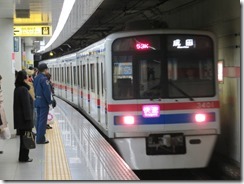
My flight, however, would be leaving from Haneda, as previously mentioned, my first visit ever (all my other flights have been to/from Narita). While I could get the Keikyu Railway (via the Asakusa Line) direct to Haneda from my hotel, I wanted to ride the Tokyo Monorail. But first I needed to return to my hotel.
I hopped off the Asakusa Line at Higashi-Nihombashi Station, which is connected by underground tunnels to Bakuroyokoyama Station (served by the Toei Shinjuku Line), which, after walking the entire length of the station, is connected by underground tunnels to the JR Bakurocho Station. After walking the entire length of that station too, I was finally back at the hotel. Might have been a little faster – albeit colder – to just walk on the surface.
At the hotel, I repacked my day bag into my suitcase (and its contents into my backpack) before doing one last weight check – my suitcase was still just fine, but my backpack had crossed the line. Just had to hope noone checked. Also popped into the lobby bathrooms. Found them a little weird – there were two, a women’s and an everyone else’s. By which I mean, men’s, backup women’s, wheelchair, baby change room, everything. Despite the shared function, however, it inexplicably contained a urinal. (Actually urinals don’t really seem to be a big matter here – the ones in public bathrooms on the street frequently had nothing more than a purely symbolic barrier blocking the view of passers-by).
But moving on. Hopped onto the Sobu (Rapid) Line at Bakurocho for the final time, and as though it was teasing me, I managed to catch one bound for Kurihama. Switched to the Yamanote Line at Tokyo, then hopped off at Hamamatsucho Station to switch to the monorail. I followed the arrows pointing towards the monorail, and wound up lugging my suitcase down a flight of steps, then turning ninety degrees and taking an escalator straight back up to the same level, finding myself at a separate ticket gate for the JR station just across from the monorail entrance. Not happy, Jan. I was a little bit amused that the lift to the platform had its very own ticket gate (since it was located some way from the gates by the escalators).
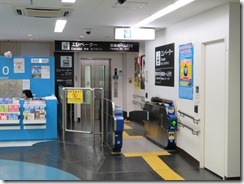
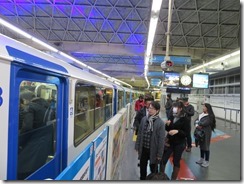
Hopped on the monorail. Lovely train. A bit dark for the view, though I did manage to see Rainbow Bridge all lit up in rainbow colours, and caught passing glimpses of Tokyo Tower between the buildings. Arrived at Haneda International Terminal just fine. I did have a brief moment of confusion, as the Qantas app said my flight would be leaving from Terminal 1, but that’s a domestic terminal. Think perhaps it was actually saying Terminal I (as in, I for International).
Almost perfectly used up the credit on my Suica card – there was just enough left over to buy a drink (or possibly two) from a vending machine, though I never got around to looking for a vending machine in the airport to actually do so.
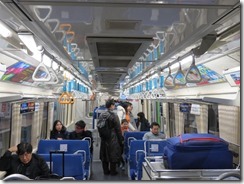
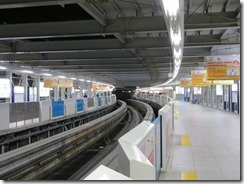
Headed inside and checked in, then browsed the fairly impressive shopping centre upstairs. Finally managed to find some special-edition Kit-Kat flavours – maybe checking for them in convenience stores was not the way to find them. Also went outside to admire the observation deck (where you can see planes taxiing and coming in to land and so forth), but it was cold out there, so I didn’t stay for long.
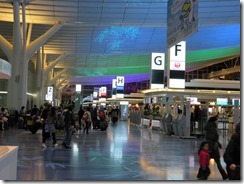
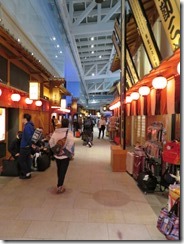
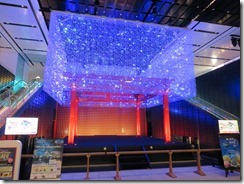
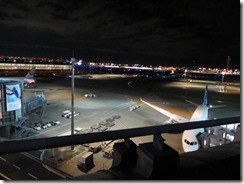
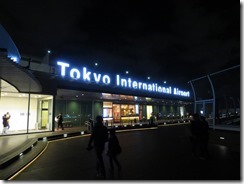
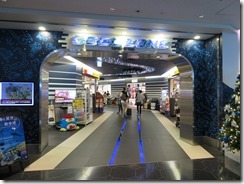
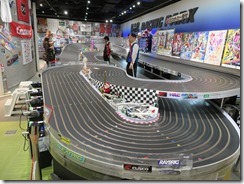
My flight wasn’t going to be taking off until 10pm, and the Qantas app said I could only expect “refreshment and breakfast”, so I started looking around for dinner. Found a sushi train, so I decided to eat there after all. There wasn’t actually much going around on the belt – instead, the usual Japanese practice is the chefs stand right there making sushi, and you shout at them what you want. I decided to try otoro, the absolute premium top-of-the-range fatty tuna. There was a plate going past with one of each of the three types (in increasing quality, akami, chutoro and otoro), so I grabbed that, although it was not cheap. But hey, my reasoning is that I charged up my travel card with funds months ago, so from the point of view of my bank account, it’s money that I’ve already spent. Took me a little while getting the hang of shouting orders at the chef (my first tentative “um, excuse me” went completely unnoticed, until the guy sitting next to me shouted out on my behalf), but I ordered a few other things I’ve never seen in Australia – pickled daikon and burdock root rolls – before deciding I’d eaten far more than enough. They’ve got a magic device that counts and values your plates just by swiping it up the side of the stack, and I have no idea how that works. (Third photo here is the tuna – from the left, chutoro, akami, otoro. I think I could actually taste the difference.)
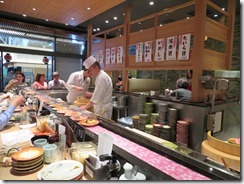
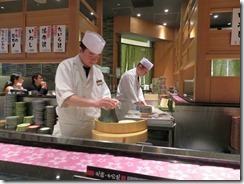
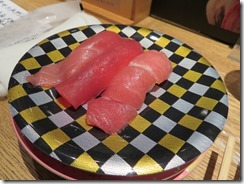
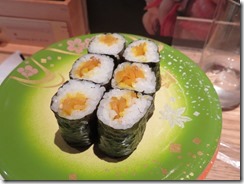
Headed through security until I was soon waiting at the gates – and just in time to board. Hopped on board and found my seat. I paid for an exit row seat on this trip, though it’s right next to the galley (and right across from the crew jump seats). Chatted to my seat mates and the crew opposite for a bit as we took off, because you can’t use the fold-away in-flight entertainment during take-off, then my seatmates dropped right off to sleep, while the crew served dinner. Yes, a second dinner for me. I had karaage chicken and rice, with mousse for dessert.
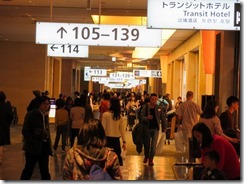
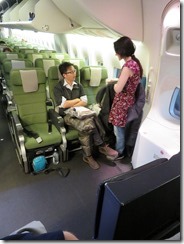
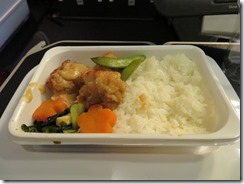
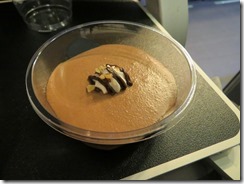
Afterwards, I tried to get some sleep. I cannot sleep on planes at all, but I was hoping with the lateness of this flight that I’d be so tired I’d just drop off. I did nod off a few times, but for some reason, every time I did, I’d awaken with a start with a feeling like I’d stopped breathing, and like I wanted to jump up and run around the plane screaming, or something.
I watched The Emoji Movie just to see what all the fuss was about. (Discovered I’d dropped one of the rubber earpieces from my iPod earphones – exactly the same thing happened to me on my last flight home from Japan, which is rather annoying. Fortunately, the airline headphones were better quality than I remembered.) It felt like the movie creators had never used a smartphone before in their lives. Also found, up the back near the toilets, a whole wall with a rack full of Tim Tams and mini muesli bars – the promised refreshments, I guess, but I’d never seen that kind of self-serve rack before. Normally there’s another galley up the back. Also had a shelf with eye masks and tooth brushes and socks and so forth, so I grabbed an eye mask and went back to try sleeping again.
Think I got a bit more sleep, but all too soon it was time to wake up and have breakfast. A kind of… breakfast pizza type thing? And two segments of mandarin sitting in a tub of yoghurt.
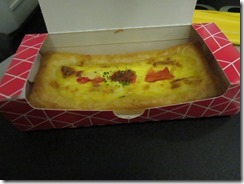
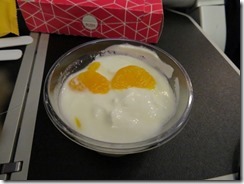
I re-watched the first half-hour or so of Wonder Woman before I had to put the screen away for landing. Sat twiddling my thumbs for a bit as we descended, trying to figure out the best moment to pop in my usual stick of gum to help with ear pressure on landing, when all of a sudden, we were already on the ground. I was completely caught by surprise – hadn’t even had to pop my ears more than a couple of times.
The flight landed a bit early, at 9:15am Monday. Headed out to grab my luggage. For a moment, I thought my suitcase was coming out first, but it was just someone else’s which happened to look exactly the same. Once I did get my suitcase, more towards the back half of the collection, I headed outside, and was hit by a wall of absolute muggy humidity. I hadn’t found the opportunity to take off my thermals from Japan, and now they were sweltering. Thought of popping into a bathroom to take them off, but I decided to just bear it.
Headed to the train station to get a train home, and just by arriving on the platform to one of those natty old silver trains, I was suddenly missing Japan a great deal. Got off at Green Square and took the wrong exit, missing my bus, so I had to wait in the heat for the next one. Wound up with a lead-footed driver, and missed Japan all the more.
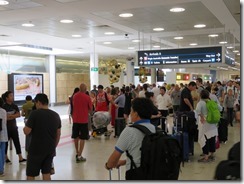
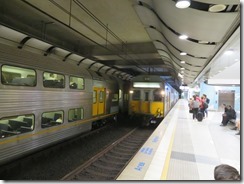
Soon, I was safely home. I wasn’t feeling too bad, so I thought I’d head into work – I have a lot of work to get done this week – but not wanting to leave holiday mode any time soon, I instead found myself sitting in my computer chair for three hours twiddling my thumbs. Eventually headed into work, but suddenly realised upon arriving that it was only the 18th, not the 19th, meaning I still had another whole day in which to do the things that needed to be done before the 20th, so I gave up and went home again.
Very fruitful day.
Already miss Japan. Here’s hoping James and I can manage to organise another trip for next year.
Today’s photo count: Nine hundred and thirty-six (which includes the photos I took on Monday)
Today’s pedometer count: 22,368 steps, for 16km (which does not include the steps I took on Monday)
Today’s goshuin count: Just the one, Kanda Myojin. Also bought a nice bag at Kanda Myojin to put it in – I’ve been using the cardboard sleeve that the shuincho came in to protect it, but it’s just been getting scruffier and scruffier. A few shrines have sold shuincho bags, but there haven’t been any I’ve particularly liked until now – plus, this one was a bit more affordable than others I’ve seen.
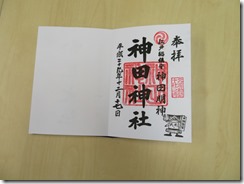
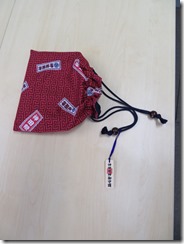
Today’s stamp count: Three bonus stamps! Akihabara had a pile of loose paper you could stamp on, so I stamped Akihabara on the front, and Ochanomizu and Gotanda on the back. I considered checking the monorail or Haneda for a stamp I could use on the inside cover of my stamp book, but I didn’t get the opportunity to actually do it.



































































































